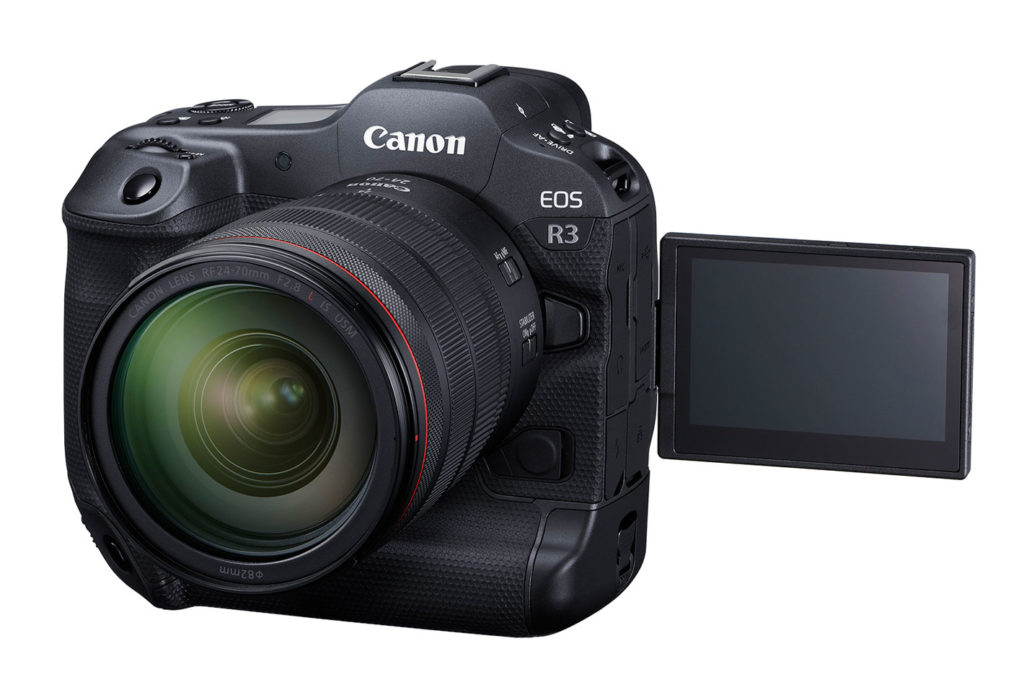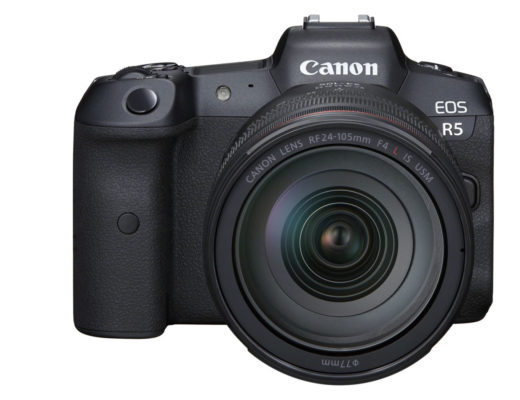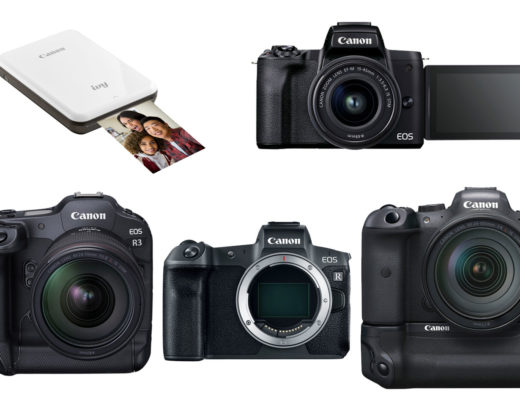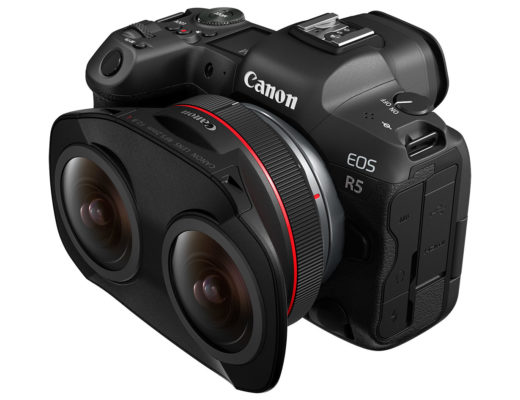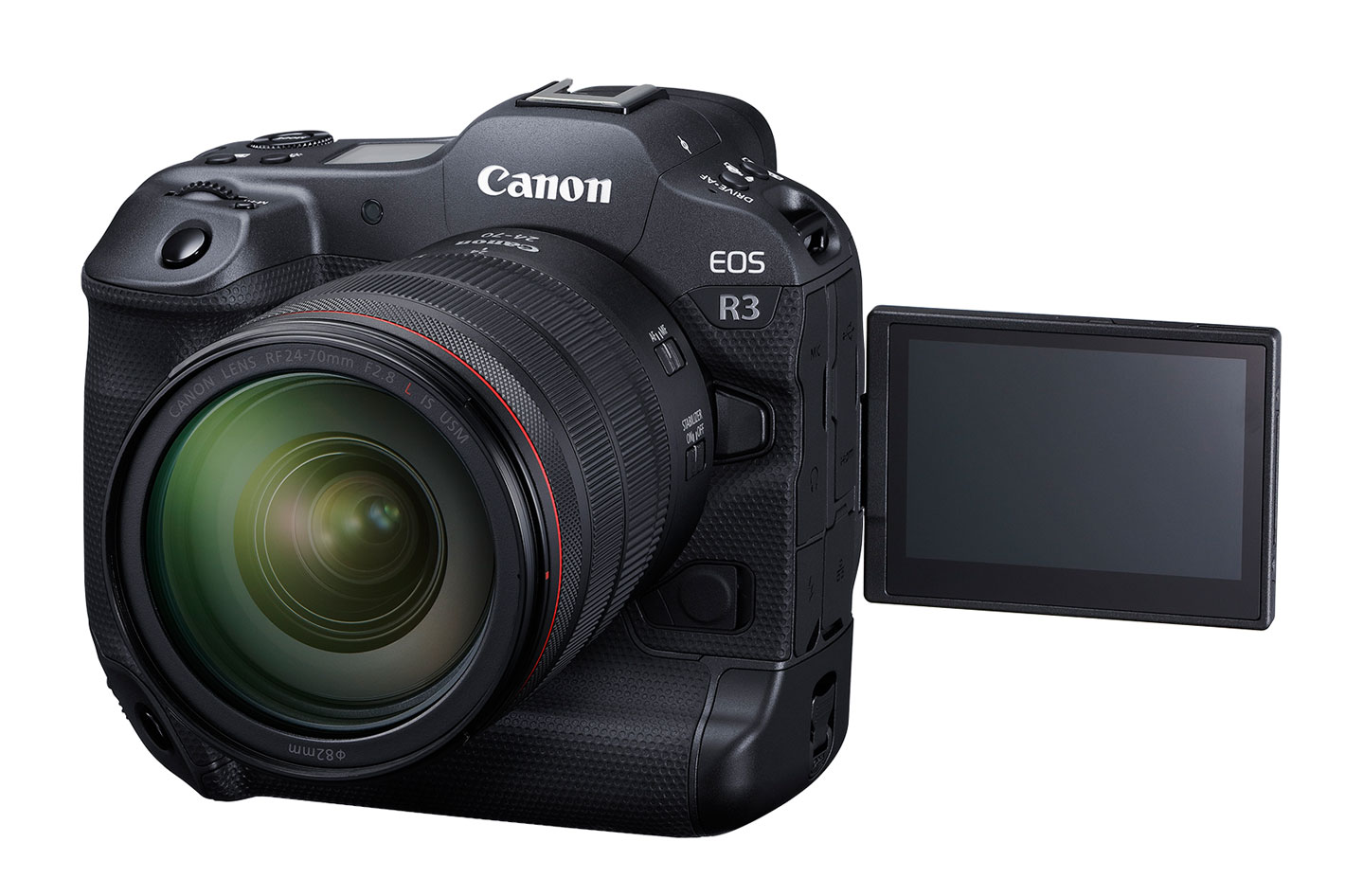 Offering a speed range from 30 seconds to 1/64000th of a second and an electronic shutter that also works with third-party flashes for the first time, the EOS R3 is the fastest EOS R series camera yet.
Offering a speed range from 30 seconds to 1/64000th of a second and an electronic shutter that also works with third-party flashes for the first time, the EOS R3 is the fastest EOS R series camera yet.
Built around what Canon claims is a ground-breaking new 24.1 megapixel backside illuminated stacked CMOS sensor, the EOS R3 offers, according to the company, lightning fast image capture and enhanced responsiveness. Rolling shutter distortion is almost eliminated, according to Canon, and with a rapid shutter speed, offering a range of 30 seconds to 1/64000th of a second, it helps sports photographers freeze the fastest of subjects. One note to remember: the high speed is only achieved when using the electronic shutter, as the mechanical shutter provides a range of 1/8000th to 30 seconds, which some might consider something from the past.
If you’re one of those photographers or videographers who loves to show the megapixels in your camera, the EOS R3 may not be for you. The 24.1 megapixel sensor will not turn heads, and you’ll probably hear from someone that “my smartphone has more pixels”. But if you’re a serious sports photographer or a photojournalist covering action, you’ll probably pick the EOS R3, because it’s, as Canon states, the fastest EOS R series camera yet.
“The launch of the EOS R3 sets a new benchmark for the Canon EOS R camera system. Canon listened carefully to the voices of professionals when developing a camera to meet their standards,” said Tatsuro “Tony” Kano, executive vice president and general manager of Canon U.S.A.’s Imaging Technologies & Communications Group. “The EOS R3 is a monumental evolution in digital imaging technology. I look forward to seeing the camera in action on the sidelines of sporting events and in the hands of nature and wildlife photographers across the globe.”
Able to shoot at up to 30fps with AE and AF tracking even when shooting RAW files, as well as options for shooting at 15fps and 3fps, the EOS R3, one could say, adapts to the pace of the moment, from shooting stills faster than Hollywood’s 24fps movies to a slow cadence ideal for when you don’t need to make sure you freeze the moment. Even a nature and wildlife photographer will appreciate the EOS R3, because, after all, this camera offers them so many things that make shooting wildlife easier.
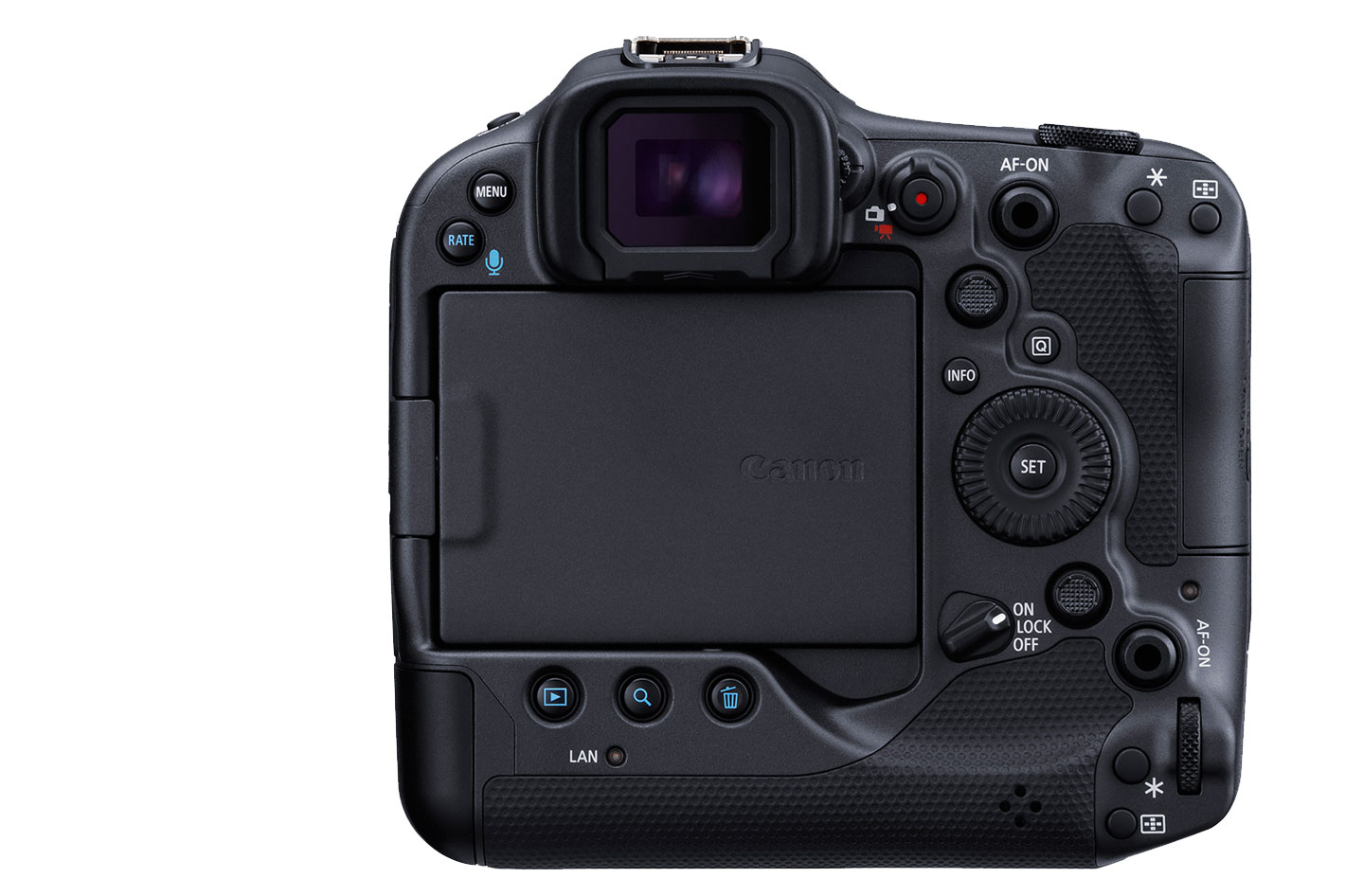 I would buy it for the Eye Control AF
I would buy it for the Eye Control AF
Not many pixels, you said? I don’t know, I still look at images – both aerobatic displays and wildlife – I captured with my EOS D30, with an APS-C 3.25MP sensor, and feel they are just fine. Curiously, Douglas Kirkland also used an EOS D30 in the early 2000’s and when we interviewed him for my magazine, at the time, he said he enjoyed using it for his work, sharing some examples. Two decades later, the EOS R3 offers a bigger sensor, many more pixels, which are also better pixels, and electronics and digital processing much more sophisticated. Not enough pixels for you?
Before we continue this note about the new Canon, let me state one thing: I do not own or even intend to own any EOS R camera, but if I was to buy one, I would probably break the bank to get this EOS R3, because is appears to be everything that I need from a camera (in fact more than I need, I guess…) but first and foremost because it brings back something I loved from the Canon EOS 5. No, not the EOS 5D, but the original EOS 5, with eye-controlled focus. It’s something I loved to use and having a new camera with the system – which I believe will be even more efficient now – is like having, not one but a whole bunch of cherries on top of a cake. IMHO.
The Eye Control AF present in the Canon EOS R3 provides, according to Canon, a more natural connection between the camera and the photographer. This intuitive and pioneering AF point selection method moves the focus point to where the photographer looks. In situations where the story can quickly unfold, this allows photographers to instinctively focus on the action with just a look. One question, if I may: if your marketing says Eye Control AF is so good, then why, Canon, did you take so long to bring it back?
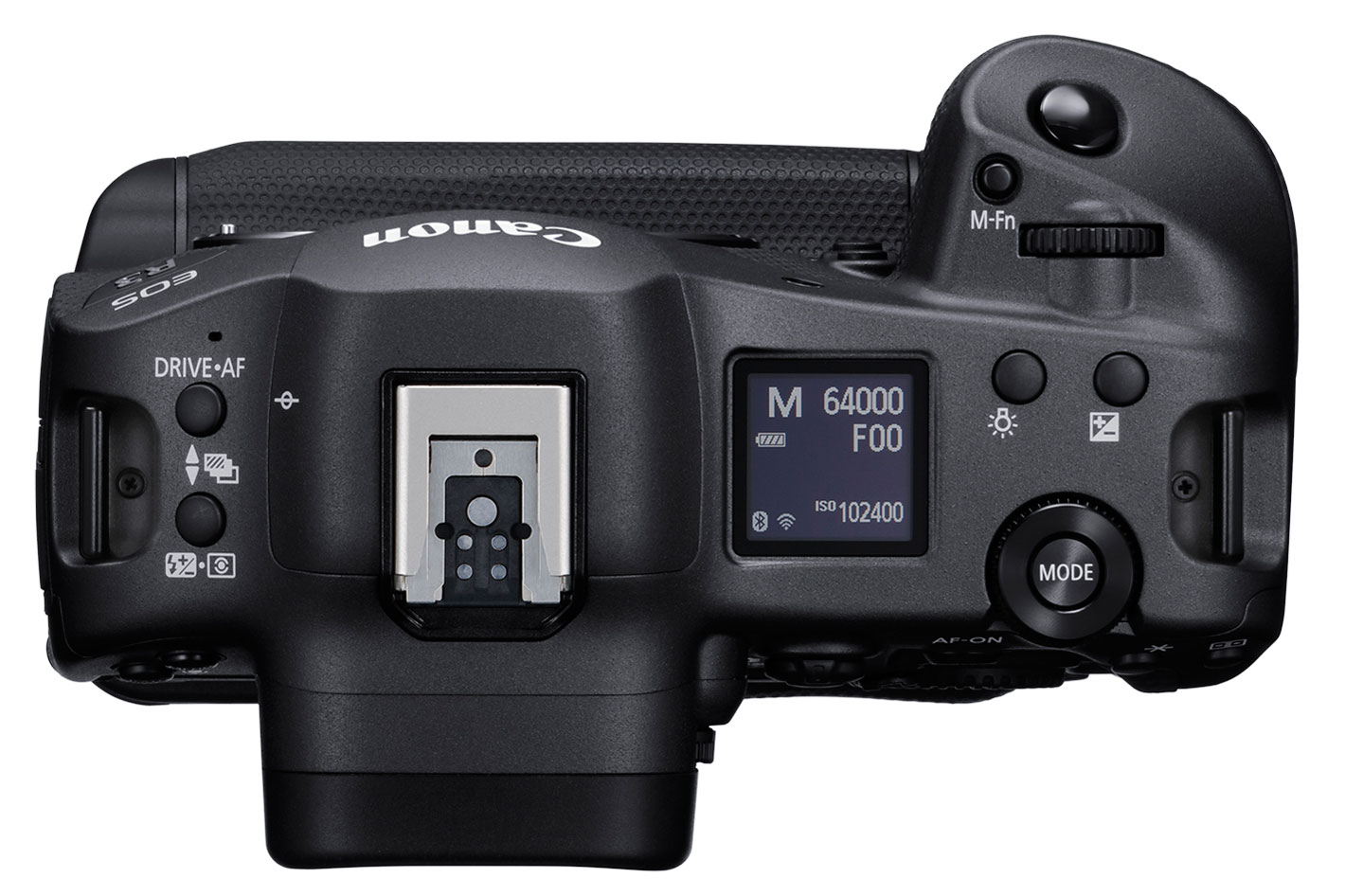 6K 60p RAW resolution footage
6K 60p RAW resolution footage
Eye Control AF in the original EOS 5 was loved by some and hated by – many – others. I used to say photographers needed to have a Zen approach when using it and really laser focus on what they wanted to be the key element in the frame, with both their eye and mind… something similar to what Henri Cartier-Bresson preached or was said to preach about “the decisive moment”.
If you’re not keen in using the Eye Control AF function, the camera has other AF options – more conventional – for you to use: the quick smart controller and the precise multi controller, which are also classic Canon-style AF options present in many of its cameras since the early DSLRs. One question remains now: will the intuitive Eye Control AF make it to other models from Canon?
Video… there are some good news for those who want this camera for video. As with the EOS R5, the EOS R3 takes Canon’s hybrid offering to the next level – meeting the demand for photographers to capture the action in both high-quality stills, and impressive high-resolution video. The camera is able to capture 6K 60p RAW resolution footage, which offers 50 per cent more detail than 4K. Canon says that “with 6K CRM RAW files, exposure and white balance can be corrected post capture to ensure stunning image reproduction” and adds that “4K footage up to 60p is oversampled from 6K guaranteeing the highest possible 4K movie quality.”
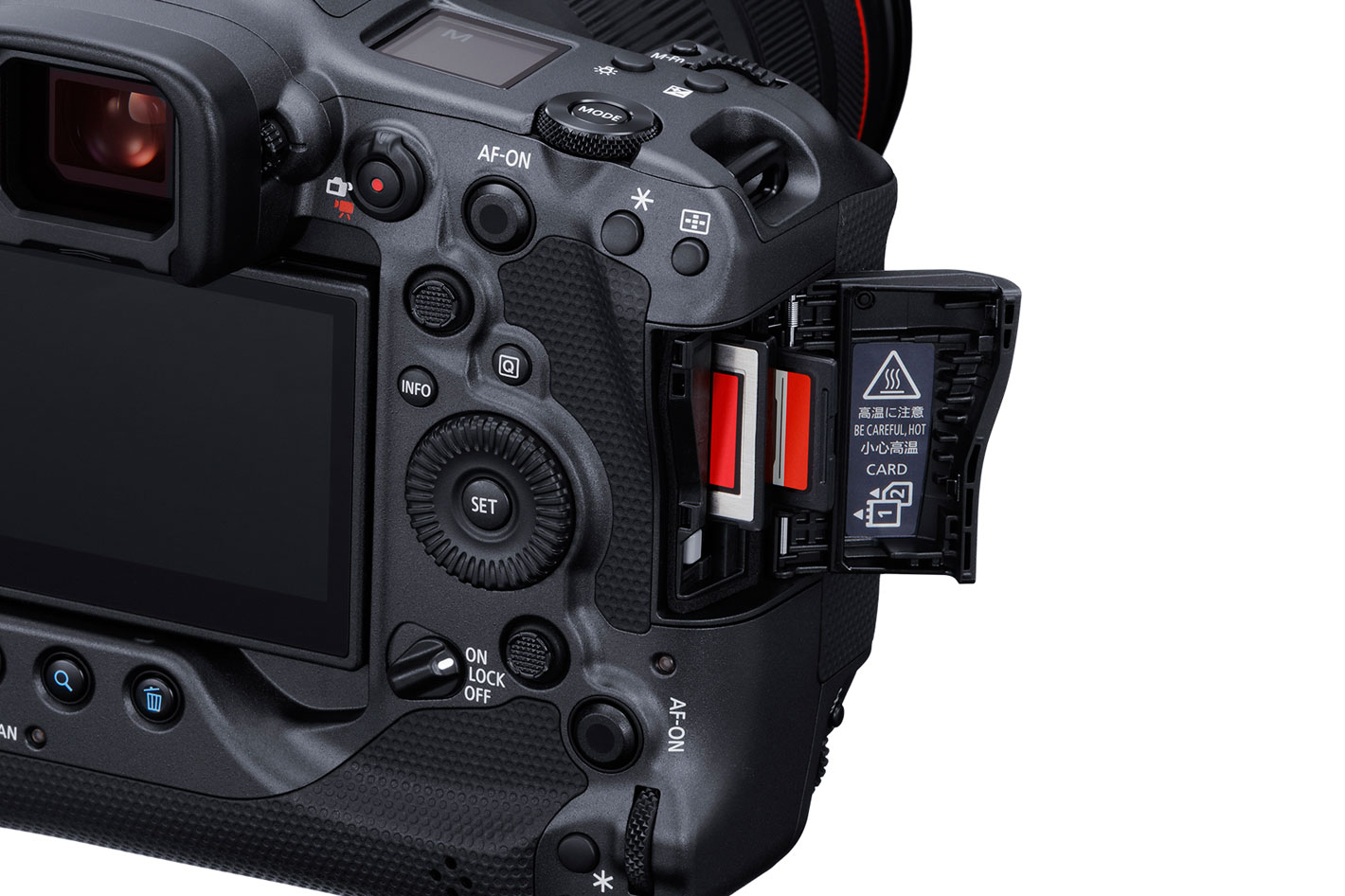 Capture 4K 120p footage
Capture 4K 120p footage
The EOS R3 also captures 4K 120p footage for stunning 4K resolution slow motion, which is great for high speed and dynamic sports. The company claims that with the Canon EOS R3 “It’s now possible to record up to six hours of regular video or 1.5 hours at high 119.88/100p frame rates.” One note more: recording time is dependent on battery level, memory cards and temperature.
Canon says that at its core, the EOS R3 is designed to help photographers outpace their competitors – and the same is true for video. Because file sizes can grow when shooting video, CRM light or MP4 footage can be recorded in All-I, IPB or the smaller IPB light option, allowing users to select from a range of bit rates to meet their needs and storage requirements. Dual card slots, including a UHS-II SD card slot and the ultra-high speed CFexpress make shooting 6K RAW video possible and support simultaneous recording to both cards in MP4, providing a fail-safe back up of vital footage.
Canon’s renowned Canon LOG 3 enables 10-bit internal recording, to achieve a greater dynamic range or 10bit HDR PQ which minimises the need for editing or grading footage in post-production. Excellent for roving reporters, the EOS R3 features Canon’s new Multi-Function Shoe and is compatible with the newly launched Directional Stereo Microphone DM-E1D – a camera-powered directional stereo microphone using digital processing – and the TEAC Tascam CA-XLR2d-C XLR adapter which enables two channel recording with professional XLR microphones.
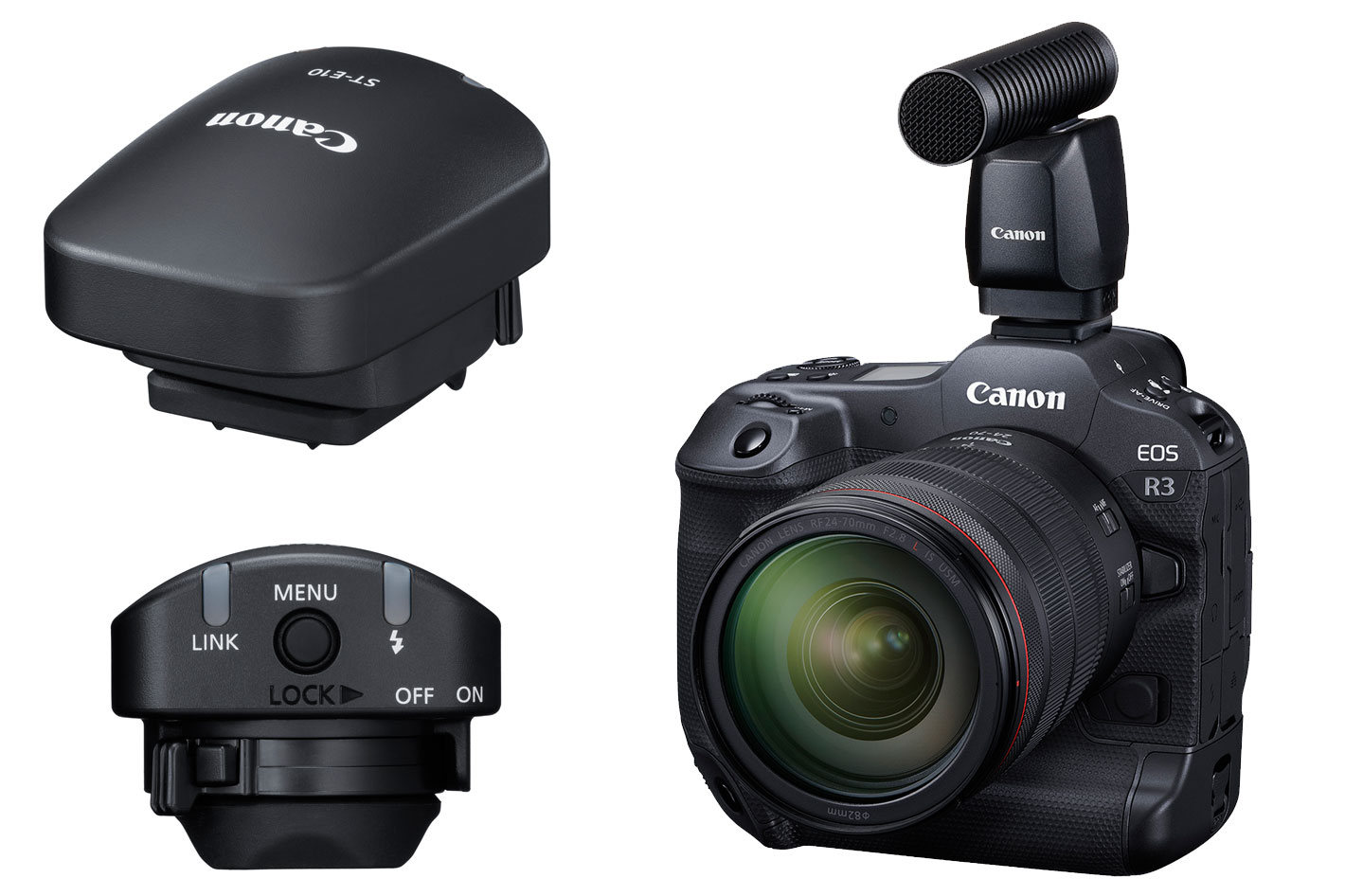 Able to focus in lighting conditions as low as -7.5 EV
Able to focus in lighting conditions as low as -7.5 EV
One final note which is important for photographers but crucial for video shooters: enhancing the ability for handheld shooting and steady movie production on the move, the 5-axis In-Body Image Stabilizer can combine with optical Image Stabilizer in selected RF lenses and offers industry-leading performance with up to 8-stops.
We’ve published, before, as Canon revealed them, some of the key features present in the new EOS R3, but some more aspects of the camera will also interest ProVideo Coalition readers. Designed using feedback from the most demanding professional press and sports photographers, the EOS R3 features over 100 improvements upon Canon’s mirrorless and DSLR models. The result is, Canon claims, “a camera which dramatically streamlines workflows and takes the connection between camera and photographer to new levels, for unbeatable speed and responsiveness.”
The EOS R3 represents the optimal balance of performance, resolution and speed to offer news and sports photographers a camera to outperform and outpace the competition. Capable of focusing in 0.03 seconds, the EOS R3 is the fastest EOS R series camera yet – perfect for capturing the unpredictable action of sport and reportage. Powered by Dual Pixel CMOS AF II, the EOS R3 features an improved Deep Learning algorithm, offering AF tracking including human and animal eye, body, and face detection as well as head detection for humans in both stills and videos.
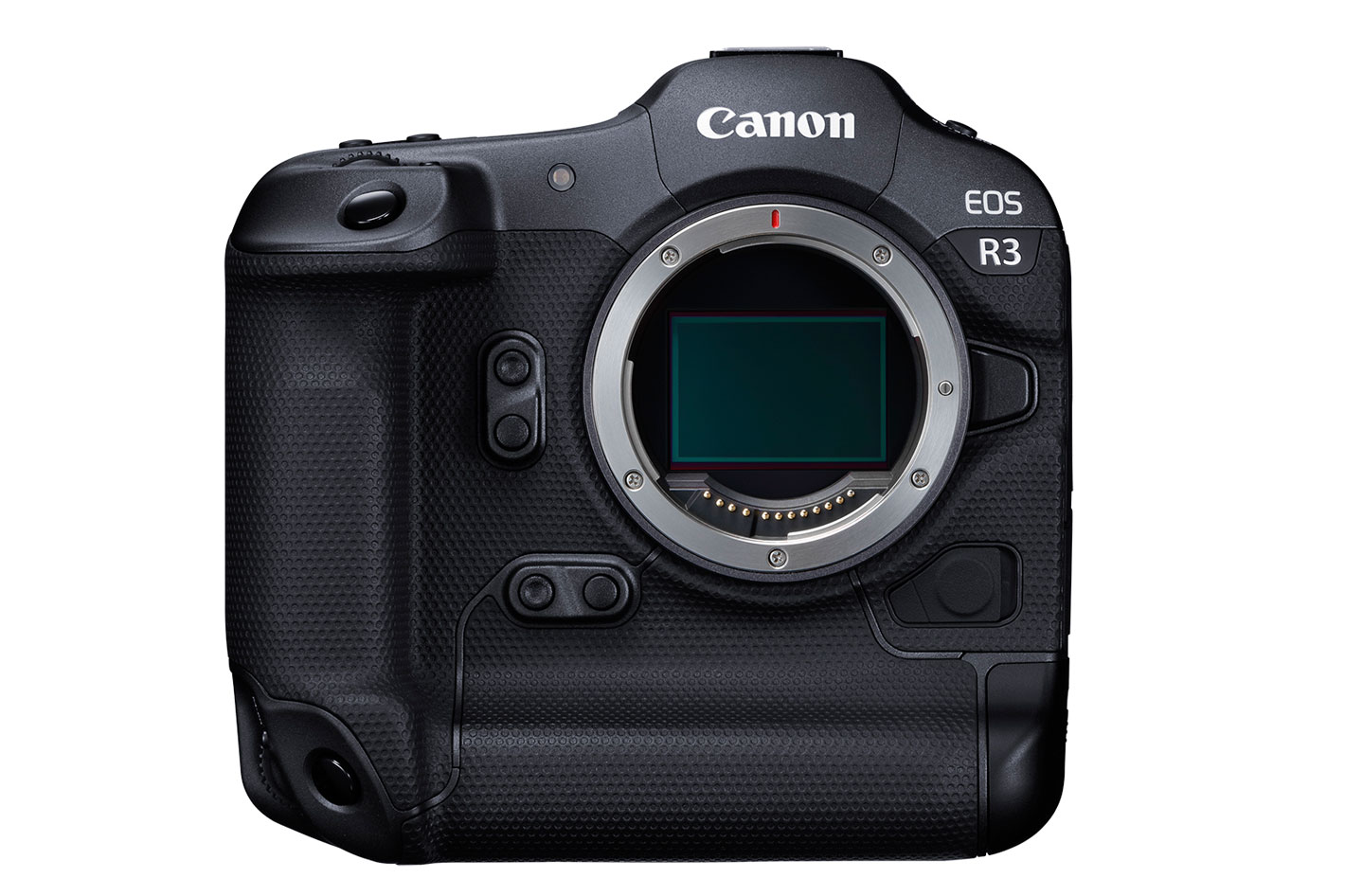 EOS R3: firmware updated using smartphone
EOS R3: firmware updated using smartphone
Designed with motorsports photographers in mind, Canon has also introduced a vehicle tracking function, to expertly track motorbikes, open cockpit Formula cars as well as GT and rally cars – with the ability to prioritise the vehicle or the driver’s helmet. Eye, face, head and body detection are now available in all AF modes, as well as a new Flexible Zone allowing users to select the size and shape of the Zone AF area. The EOS R3 sets a new standard for its ability to focus in lighting conditions as low as -7.5 EV – making this one of the most capable low light cameras available.
Professional photographers shooting in the field depend on more than just a speedy camera, they also need a reliable way to send their images to the news desks and editors. So, the EOS R3 offers a number of professional connectivity options including built in version 5.0 Bluetooth and 5 GHz Wi-F, to streamline workflows and simplify the connection to a smartphone or Wi-Fi network. Ideal for sport arenas, the built in Gigabit Ethernet port enables a high speed wired connection. And, for when speed really matters, photographers can transmit images to clients via FTP. For existing EOS R5 and EOS-1D X Mark III users, network settings can be shared between the three cameras.
Canon says that users can remotely control the camera from a mobile device using the Canon’s Camera Connect App or using the Browser Remote function via an ethernet connection. A popular feature from the EOS-1D X Mark III, the Browser Remote function also enables users and head offices to remotely change metadata, browse and download images. Users can use Canon’s Mobile File Transfer (MFT) app alongside the EOS R3 to easily add meta data from a smartphone and transmit images via a 4G/5G network when Wi-Fi may not be available.
A new smartphone holder accessory for the EOS R3, the Smartphone Link AD-P1, allows users to mount their iOS or Android device on top of the Multi-Function Shoe Adapter and easily transmit images via the new MFT app. Canon’s next-generation Multi-Function Shoe is compatible with a variety of accessories including the Speedlite EL-1, and new accessories such as the ST-E10 Speedlite Transmitter, External Mic and the Smartphone Link Adapter. The Canon Camera Connect app now enables the EOS R3 firmware to be updated via your phone – a first for an EOS camera.
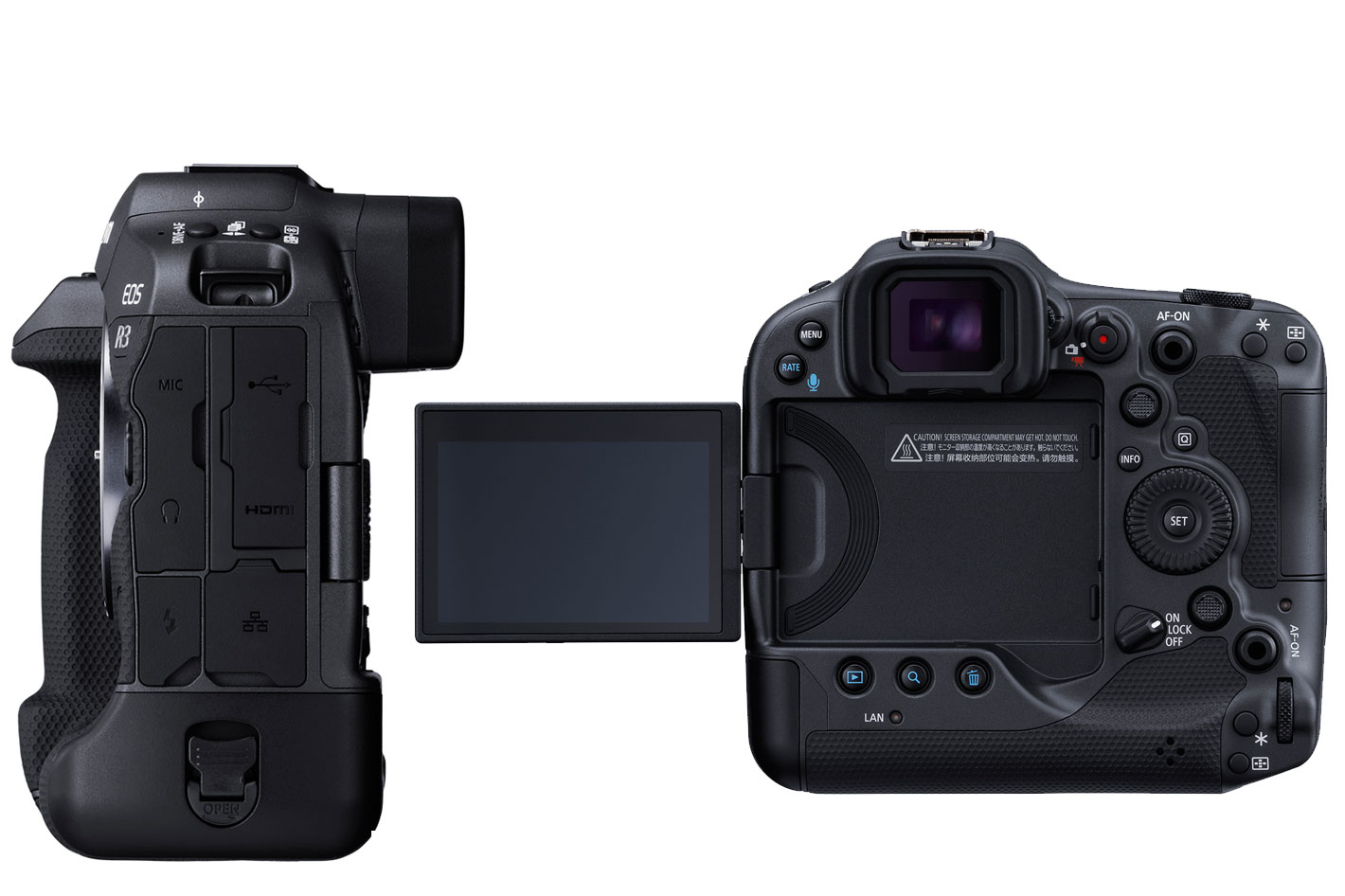 A blackout-free viewfinder
A blackout-free viewfinder
Offering all the speed and familiarity of the EOS-1 series, Canon’s latest mirrorless employs a new Canon developed blackout-free, high-quality 5.76 million dot electronic viewfinder with low lag and refresh rate of up to 120 fps at full resolution for a viewing experience that rivals an optical viewfinder. Along with the newly introduced OVF simulation View Assist, the viewfinder offers, Canon says, “richer tones and greater dynamic range. The shutter lag can be reduced to an astonishing 20ms – less than half that of a conventional camera, for near instant capture when the shutter release is pressed.”
The new high resolution Vari-Angle 4.1-million dot touch screen provides more detail than ever before and offers greater flexibility of shooting angles thanks to its ability to tilt and rotate into a range of positions. Combining existing EOS ergonomics with new controls and a number of new customisation options for users, including shutter sounds with volume control, the EOS R3 provides familiar, yet advanced control. To save time when moving between camera bodies, photographers can easily copy and save personalised settings to memory cards. Using the same LP-E19 battery as the EOS-1D X Mark II and EOS-1D X Mark III, the EOS R3 enables extended shooting and greater compatibility with existing DSLRs.
The Canon EOS R3 Full-Frame Mirrorless Camera is scheduled to be available in November 2021 for a suggested retail price of $5999.99.

Filmtools
Filmmakers go-to destination for pre-production, production & post production equipment!
Shop Now